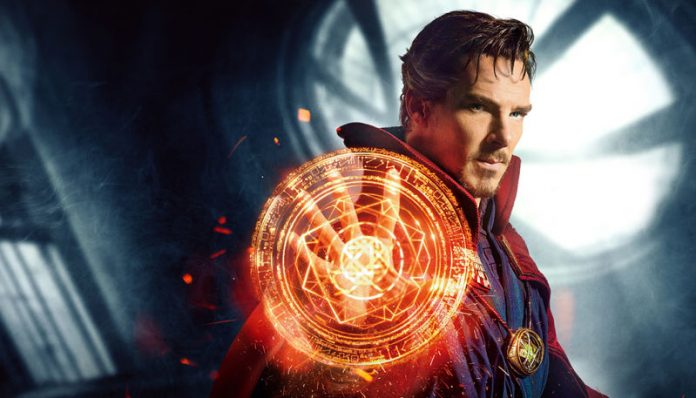If you’ve seen the trailers for Doctor Strange and the thought hadn’t already crossed your mind, Dr. Strange (Benedict Cumberbatch) makes clear after his first mind-bending trip into the other dimensions of the multiverse, that this film would look extra cool on any kind of hallucinogenic. You won’t need LSD to make this film trippy or visually pleasing, though; imagine Interstellar and Inception got together and made a movie, but Marvel funded it. The city folding effects from Inception and the interdimensional time bending of Interstellar feature prominently in Doctor Strange, though the pervasive, marketable, and rather dull story structure of most Marvel films makes its way into the mix as well.
You’ve seen much of this film before, its plot resolution and many of its elements are a hybrid of films past. A gifted prodigy turns to the dark side through their thirst for knowledge, a new prodigy that follows the same pattern but for some unexplained reason develops a sudden case of morals decides to confront the evil prodigy (*ahem* Star Wars). The climax of the story is essentially Groundhog Day divided by sci-fi minus Bill Murray.
Despite these tropes, the film is clever. Dr. Strange’s wit plays a strong role in the comedy of the film. The “Cloak of Levitation,” a semi-sentient relic cape offers humour as well with mute mannerisms that match the magic carpet from Aladdin. The 3D, too-smooth, computer-generated imagery brings a comic book feel to the film. But, the easily anticipated and smoothly choreographed fight scenes that produce no fear of defeat and the trademark digestible storyline are what really sell the Marvel vibe.
The mind-bending time-remapping and the genius with how this film handles time travel is a pure visual treat. Time whips back and forth as characters battle outside of it, and the complexity of it is not so much that it loses the viewer like Inception might have. The film makes an attempt to dwell in reality by joking about the wifi password at “Kamar-Taj” (the secret training village in the Himalayan mountains that Dr. Strange stays at) but it has weak effect. Rather than attempt to relate to viewers by appealing to their sense of reality, the film should dive deeper into its comic book roots and take on the fantasy and sci-fi that gave birth to it.
Marvel knew they would face a tough time with the making of this film, the amount of racially sensitive content in the Doctor Strange originals is hard to get around. The “Ancient One,” a role usually portrayed in the comic books as an Asian character, is filled by Tilda Swinton. Her demeanour and appearance are highly reminiscent of her role as the White Witch in The Lion, the Witch and the Wardrobe (that is to say, excellent), but it was a daring and racially-charged step for the studio to take. According to The Hollywood Reporter there was never any right way to go with this character anyways; due to the strained relationship between China and Tibet, if Marvel had made the Ancient One Tibetan — as is the traditional origin — they would have been running the risk of losing the rights to show the film in China, an event which would have cost them millions in theatre revenue. Should the amount of profit have any effect on a film’s ability to avoid racial insensitivities and whitewashing? Marvel’s answer is yes, and most studios would likely follow the same suit.
With Doctor Strange comes the first time that Marvel allows the possibility of powers that sit in the spiritual realm to take centre stage, as opposed to the science-based anomalies and mutation-centric powers of the X-Men and Avengers. As could be expected, despite the fact that they have included spirituality and religiously based philosophies it is still delivered in the same marketable format. Ancient Eastern philosophies are delivered by white people clad in Asian garb whilst in the middle of New York. A slice of white light, no larger than several microns wide, is the largest sliver of spirituality Marvel will ever let the door to religion open up.
At the end, the classic post-credit scenes hosted the usual promises of future films. Dr. Strange and Thor may team up to rescue Odin, and a forlorn servant will revolt against all sorcerers in the next Doctor Strange installation. I usually sigh when a bonus scene promises some great film (I’m still damaged from Mr. Incredible’s sequel promises when I was a child), but this time I stiffened with anticipation. This film delivered a successful superhero tale, with exactly the packaging that Millennials are bound to love.


